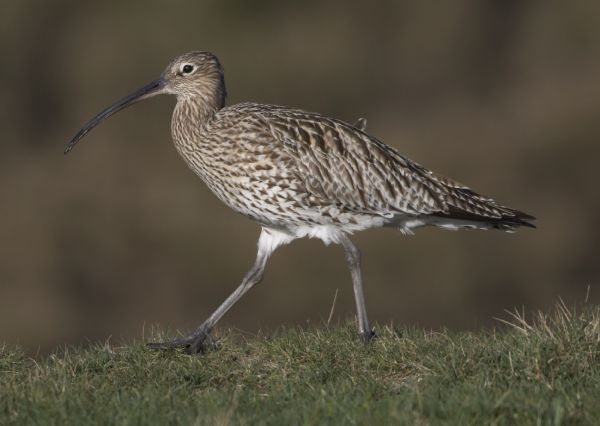April 21st marks World Curlew Day. Breeshey Kermode, UNESCO Biosphere IOM Project Assistant, tells us more about these beautiful birds and how you can help to support them on their special day:
This World Day was created by the founder of Curlew Action, Mary Colwell, in 2017, to raise awareness of and celebrate the Curlew, which is facing growing threats to its populations.

The official World Curlew Day logo, created by Curlew Action and available to download on their website.
Whilst there are eight species of Curlew worldwide, (two of which are thought to be extinct) this article will focus on the more familiar Eurasian Curlew/Numenius Arquata. This is one of two Curlew species you can spot in our Biosphere, the other being the Whimbrel.
Curlew’s are cherished members of our Island’s biodiversity and they also contribute to Manx culture…we name homes after these large waders and depict them in local art, music and poetry. The beautiful bird is thought to have gained its scientific name from its distinctive beak, which is used to probe into soft sediments for food like worms and crab. Numenius is derived from the Greek ‘New Moon’ while Arquata comes from the Latin ‘Bow-Shaped’. The English name Curlew is imitative of its call which cannot be mistaken – Currrr-leew!
Sadly, things aren't so rosy for our Curlew, and they face a myriad of threats including habitat loss, recreational disturbance when breeding and climate change. So these wonderful, evocative birds need all the help they can get to have a successful future. Dogs off a lead can destroy entire nesting sites, eggs and fragile Curlew chicks without their owners being aware so they should always be kept under control (on a lead) in nesting season, throughout the months of March to August.
Luckily it’s not all doom and gloom. Shaun Gelling, Upland Manager at the Department for Environment, Food and Agriculture, conducts important conservation work to brighten the future of the Curlew by protecting their known nesting sites. Shaun tells us more:
'By focusing land management efforts and working closely with DEFA land tenants and neighbouring land owners, we have managed to reverse the decline of this iconic species over a large area of the Neb catchment in the Southern hills. Everything needs to be right in terms of habitat for the breeding Curlew. They need suitable nesting sites, invertebrate rich wet flushes or pasture for feeding their chicks and cover from predators. Protecting nests from disturbance and predation is essential.
Successful breeding takes around 10 weeks from the first egg being laid until fledging takes place around 5 weeks post hatching. Even when eggs successfully hatch, the weather can cause chicks to perish, so when you add in predation it’s easy to understand the challenges faced by this species. Everything has to align, and one or two good breeding seasons can really help slow the decline and hopefully boost local breeding populations.'


Look closely to see the Curlew eggs among the long grass. Photos: Shaun Gelling. See if you can spot this Manx Curlew incubating her eggs (clue -bottom left!)
Manx Wildlife Trust are also doing fantastic work in this area, through the Agri-Environment scheme, which is supported by DEFA. The support and advice provided to the Manx farming community through the scheme is invaluable to the iconic Curlew as many of the remaining breeding pairs in the Island choose to nest on farmland.

The iconic Curlew. Photo: Shaun Gelling
How can you take part in World Curlew Day?
• Listen out for a Curlew in Manx Nature. If you are unfamiliar with their sound or are unable to get outdoors, you can download the ‘Call of the Curlew’.
• Keep dogs on leads and stick to paths to further protect nesting sites.
• Paint, draw or create your own Curlew using your preferred medium.
• Spread the word about World Curlew Day! For more information about this wonderful bird see this page.
Curlew Profile
Appearance: Long legs, distinctive down curved beak and mottled brown feathers.
Size: 50 – 60cm long and a wingspan of 89 – 106cm.
Diet: Worms, beetles, marine invertebrates…
Habitat: Rough Grassland, Moorland, Coastal, Farmland and Bogs.
Nesting: On the ground with long grass for cover – Curlew nest sites are very susceptible to destruction and predation.
Status: Red - the highest conservation priority.


